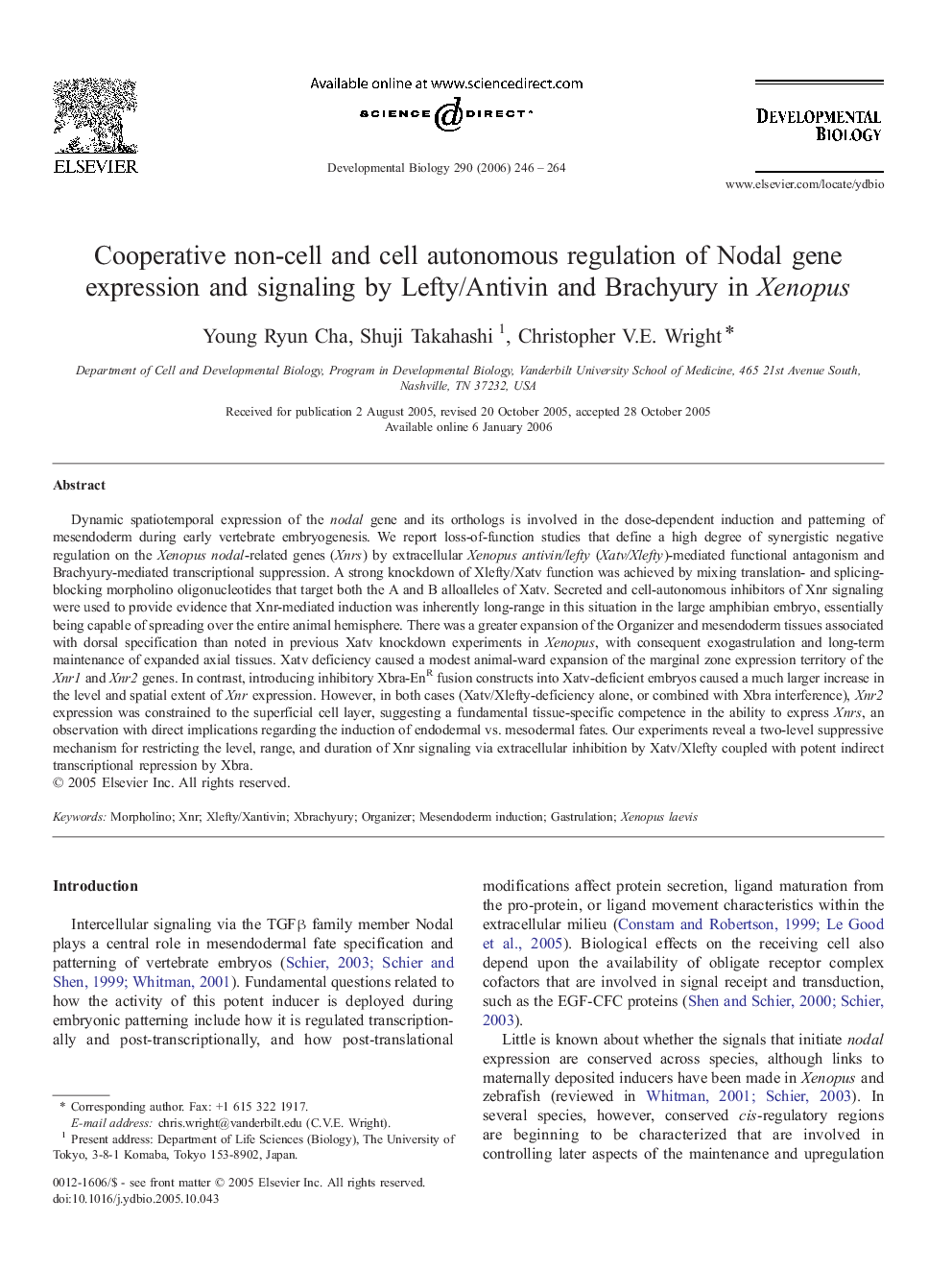| Article ID | Journal | Published Year | Pages | File Type |
|---|---|---|---|---|
| 2176084 | Developmental Biology | 2006 | 19 Pages |
Dynamic spatiotemporal expression of the nodal gene and its orthologs is involved in the dose-dependent induction and patterning of mesendoderm during early vertebrate embryogenesis. We report loss-of-function studies that define a high degree of synergistic negative regulation on the Xenopus nodal-related genes (Xnrs) by extracellular Xenopus antivin/lefty (Xatv/Xlefty)-mediated functional antagonism and Brachyury-mediated transcriptional suppression. A strong knockdown of Xlefty/Xatv function was achieved by mixing translation- and splicing-blocking morpholino oligonucleotides that target both the A and B alloalleles of Xatv. Secreted and cell-autonomous inhibitors of Xnr signaling were used to provide evidence that Xnr-mediated induction was inherently long-range in this situation in the large amphibian embryo, essentially being capable of spreading over the entire animal hemisphere. There was a greater expansion of the Organizer and mesendoderm tissues associated with dorsal specification than noted in previous Xatv knockdown experiments in Xenopus, with consequent exogastrulation and long-term maintenance of expanded axial tissues. Xatv deficiency caused a modest animal-ward expansion of the marginal zone expression territory of the Xnr1 and Xnr2 genes. In contrast, introducing inhibitory Xbra-EnR fusion constructs into Xatv-deficient embryos caused a much larger increase in the level and spatial extent of Xnr expression. However, in both cases (Xatv/Xlefty-deficiency alone, or combined with Xbra interference), Xnr2 expression was constrained to the superficial cell layer, suggesting a fundamental tissue-specific competence in the ability to express Xnrs, an observation with direct implications regarding the induction of endodermal vs. mesodermal fates. Our experiments reveal a two-level suppressive mechanism for restricting the level, range, and duration of Xnr signaling via extracellular inhibition by Xatv/Xlefty coupled with potent indirect transcriptional repression by Xbra.
